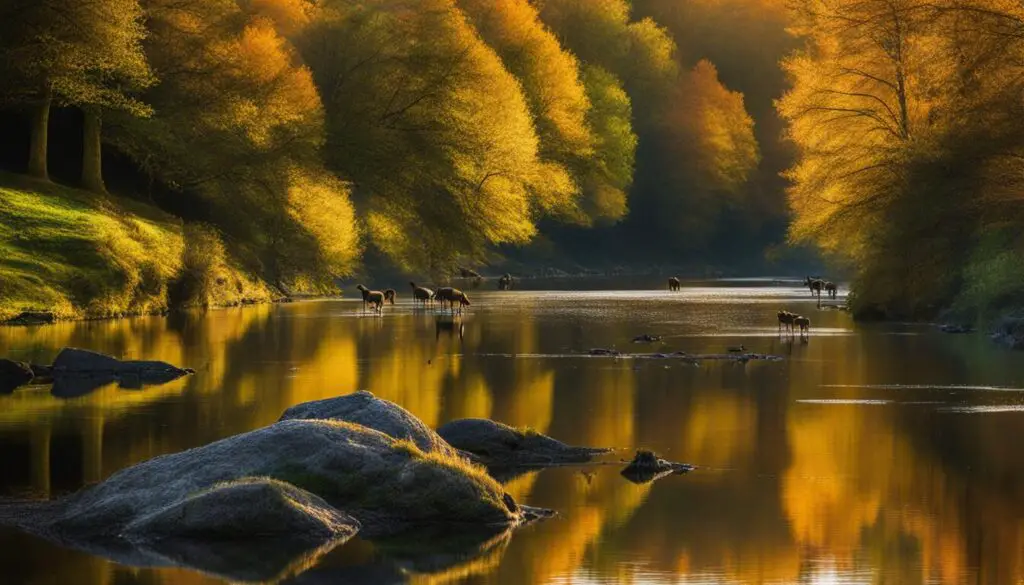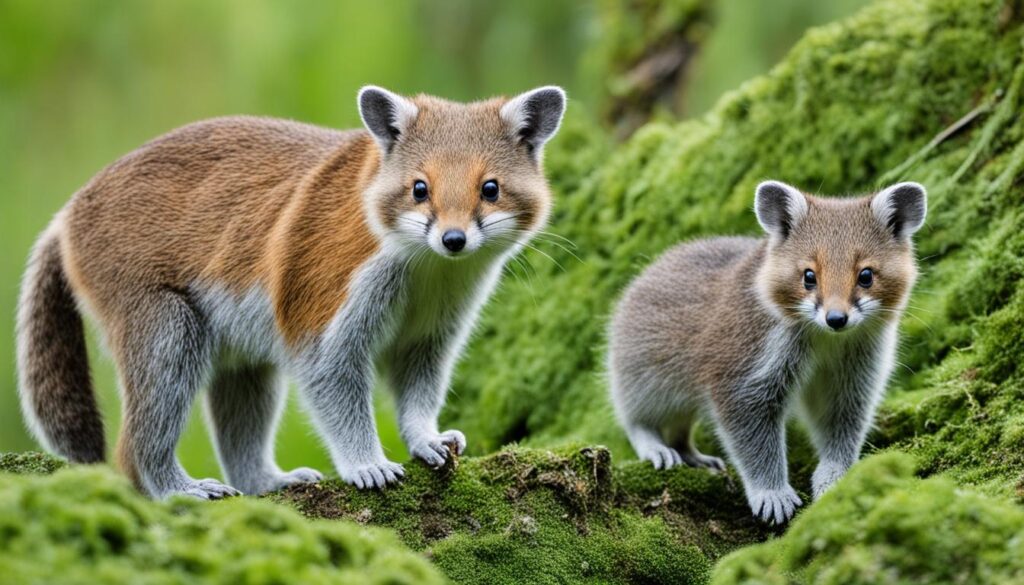Luxembourg may be small in size, but when it comes to its wildlife, it packs a mighty punch. Did you know that this tiny European nation is home to a startling variety of animals? From rare and protected species to thriving populations of mammals, Luxembourg offers a wildlife experience like no other.

Key Takeaways
- Luxembourg boasts a rich and varied wildlife experience for nature enthusiasts.
- The country’s different regions offer habitats for a diverse range of animal species.
- The Ardennes region, in particular, is home to numerous endangered plants and birds.
- Conservation efforts are crucial in protecting and preserving Luxembourg’s wildlife.
- Exploring Luxembourg’s native animals and habitats can be done through various hiking trails and nature reserves.
Native Species and Habitats
Luxembourg’s native animal species populate a variety of habitats throughout the country, contributing to its rich biodiversity and wildlife. One notable region is the Ardennes, located at the heart of Luxembourg, which is home to a nature reserve characterized by vast plateaus and narrow rocky valleys. This reserve serves as a sanctuary for numerous endangered plants and birds, emphasizing the importance of preserving Luxembourg’s unique habitats.
The Ardennes region offers nature enthusiasts and hikers a chance to experience the country’s wildlife up close. By exploring the various hiking trails and nature reserves in Luxembourg, visitors have the opportunity to observe native animals in their natural environments. From the elusive European otter to the majestic elk and the agile roe deer, these diverse habitats provide a haven for countless fascinating species.
Whether it’s birdwatching in the dense forests or spotting wild boars as they forage in the undergrowth, Luxembourg offers an immersive wildlife experience like no other. The coexistence of different habitats within a relatively small area demonstrates the remarkable biodiversity found within the country.
Endangered Species in Luxembourg
While Luxembourg boasts a diverse array of wildlife, some species are unfortunately endangered. The International Union for Conservation of Nature (IUCN) Red List identifies several endangered species in Luxembourg, including the garden dormouse, European hamster, European water vole, and many others. Efforts are being made to protect and conserve these species through conservation initiatives and habitat restoration projects. It is essential to raise awareness about the plight of these endangered species and work towards their preservation.
| Endangered Species | Conservation Status |
|---|---|
| Garden dormouse | Endangered |
| European hamster | Critically Endangered |
| European water vole | Endangered |
| … | … |
As seen in the table, these species are currently at risk of extinction in Luxembourg. Conservation initiatives and habitat restoration projects are essential in protecting their populations and ensuring their survival. By raising awareness about the importance of biodiversity and the conservation of endangered species, we can contribute to the preservation of Luxembourg’s unique wildlife.
Mammals in Luxembourg
Luxembourg is a haven for a diverse array of mammal species, making it a fascinating destination for wildlife enthusiasts. From adorable rodents to majestic carnivores, the mammals of Luxembourg play an essential role in maintaining the ecological balance of the country’s wildlife.
Rodents in Luxembourg
Among the fascinating mammal species found in Luxembourg are members of the rodent family. The peaceful woodlands and lush meadows provide the perfect habitat for these small but resilient animals. Some of the notable rodents in Luxembourg include:
- The garden dormouse, known for its cute appearance and distinctive big eyes. This species is often found in woodlands and forests, where it builds its nests in tree cavities.
- The common vole, a prolific burrower that can be observed in fields and grasslands. Despite their small size, common voles play an essential role in nutrient cycling and soil health.
- The European water vole, known for its semi-aquatic lifestyle along rivers, streams, and wetlands. These charming creatures are excellent swimmers and construct burrows in the riverbanks.
Carnivorous Mammals in Luxembourg
Luxembourg is not just a sanctuary for small mammals; it also provides a home for several carnivorous species. These top predators contribute to the biodiversity and ecological dynamics of the country. Some of the carnivorous mammals found in Luxembourg include:
- The European otter, a captivating semi-aquatic creature known for its playful behavior and graceful swimming skills. These otters can be found along Luxembourg’s waterways, where they hunt fish and crustaceans.
- The European pine marten, a sleek and agile predator that inhabits the country’s forests. Known for its elusive nature, the European pine marten primarily feeds on small mammals, birds, and insects.
- The badger, a nocturnal and territorial mammal that resides in Luxembourg’s woodlands. These omnivores help control populations of small mammals and insects while also playing a crucial role in maintaining healthy ecosystems.
The presence of these mammals showcases the remarkable biodiversity of Luxembourg’s wildlife and highlights the country’s commitment to conservation efforts. By protecting their habitats and raising awareness, Luxembourg ensures the continued existence of these fascinating creatures for generations to come.

Conclusion
Luxembourg’s animal diversity is a true testament to the country’s rich natural heritage. From the northern valleys to the nature reserves in the Ardennes, Luxembourg offers a wide range of habitats that support a diverse array of animal species. This fauna in Luxembourg consists of both native and endangered species, each playing a crucial role in maintaining the balance of this unique ecosystem.
Conservation efforts are well underway to protect and preserve Luxembourg’s animal diversity. By raising awareness about the importance of preserving these species and supporting conservation initiatives, it is possible to secure the long-term survival of Luxembourg’s wildlife. Through ongoing research, monitoring, and habitat restoration projects, Luxembourg is working towards maintaining its faunal richness for future generations to appreciate and enjoy.
With its remarkable animal diversity, Luxembourg stands as a prime destination for nature enthusiasts and researchers alike. Exploring the country’s diverse landscapes and observing its animals in their natural habitats is a fulfilling experience that showcases the beauty and complexity of Luxembourg’s fauna. By appreciating and respecting the animals that call Luxembourg home, we can contribute to the preservation of this invaluable treasure of Luxembourg’s animal diversity.
